![]()
![]()
![]()
Use LEFT and RIGHT arrow keys to navigate between flashcards;
Use UP and DOWN arrow keys to flip the card;
H to show hint;
A reads text to speech;
19 Cards in this Set
- Front
- Back
- 3rd side (hint)
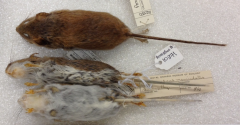
|
Myomorpha - Cricetidae
Peromyscus maniculatus - American deer mouse Smaller/non-visible white patch beneath chin, compared to white-footed mouse which is more visible |
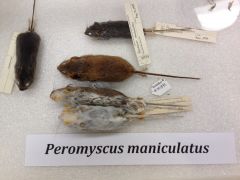
|
|
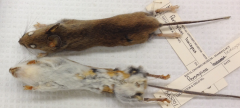
|
Myomorpha - Cricetidae
Peromyscus leucopus - white-footed mouse More visible white patch beneath chin, compared to American deer mouse which is less visible |
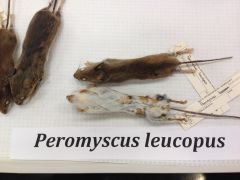
|
|
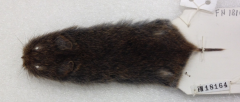
|
Myomorpha - Cricetidae
Synaptomys cooperi - southern bog lemming Short tail. Fluctuations of population Shallow longitudinal groove on front lateral surface of upper incisor |
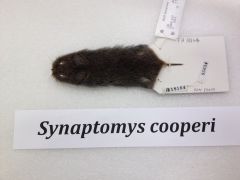
|
|
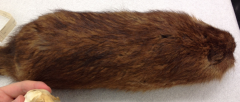
|
Myomorpha - Cricetidae
Ondatra zibethicus - common muskrat Large (1.5 feet), aquatic looking tail, partially webbed feet |

|
|
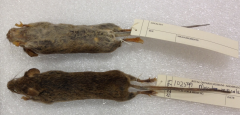
|
Myomorphia - Muridae
Mus musculus - house mouse Old World, less pronounced underside. Notched upper incisor. |
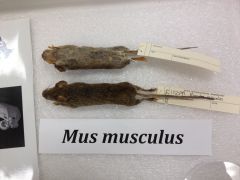
|
|
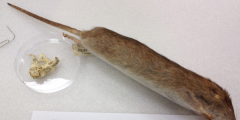
|
Myomorphia - Muridae
Rattus norvegicus - Norway rat Old world. Tip of upper incisor not notched. |
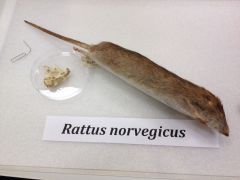
|
|
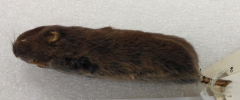
|
Myomorphia - Cricetidae
Microtus pinetorum - woodland vole Tail same length as feet |
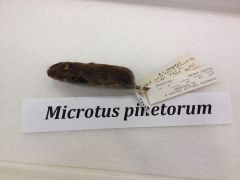
|
|
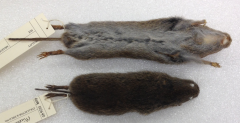
|
Myomorphia - Cricetidae
Microtus pennsylvanicus - meadow vole Tail LONGER than feet (unlike woodland vole), but still very short. Three re-entrant angles on either side of posterior upper cheek tooth |
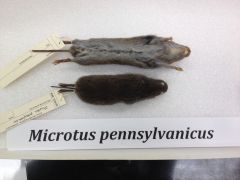
|
|
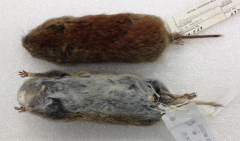
|
Myomorphia - Cricetidae
Myodes gapperi - southern red-backed vole 'Shelf-like palate,' not supported at midline |
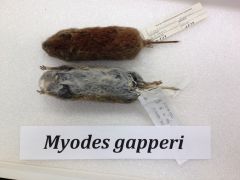
|
|

|
Hysterinomorphous - Dipodidae
Napaeozapus insignis - woodland jumping mouse Redder than meadow jumping mouse 3 cheek teeth (compared to 4 of meadow) |
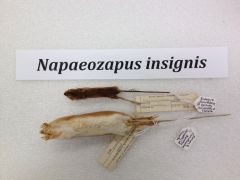
|
|
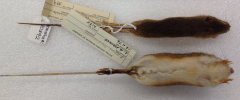
|
Hystrinomorphous - Dipodidae
Zapus hudsonius - meadow jumping mouse Brown/grey (compared to red of woodland) 4 cheek teeth (compared to 3 of woodland) |
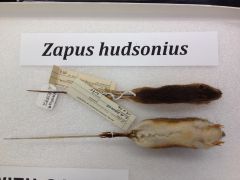
|
|
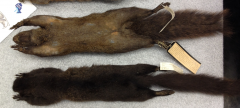
|
Sciuromorpous - Sciuridae
Sciurus carolinensis - eastern grey squirrel Auditory bullae with TWO partitions (may or may not be visible). Not 3. |
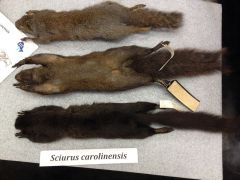
|
|
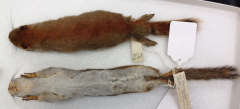
|
Sciuromorphous - Sciuridae
Tamiasciurus hudsonicus - red squirrel 3 divisions of auditory bullae, visible externally |
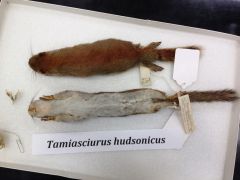
|
|
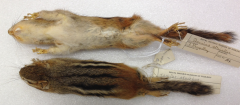
|
Sciuromorphous - Sciuridae
Tamias striatus - eastern chipmunk Stripes don't extend to the tail (compared to Northern least chipmunk, which we don't have to know) |
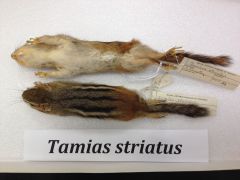
|
|

|
Sciuromorphous - Sciuridae
Marmota monax - groundhog Largest of the family. Top of skull is flat. |
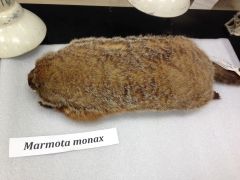
|
|

|
Sciuromorphous - Sciuridae
Glaucomys volans - southern flying squirrel Smaller and skinnier than northern, but both have white underside (northern is supposedly slightly coloured at base, but hard to tell). Both larger than mice. |
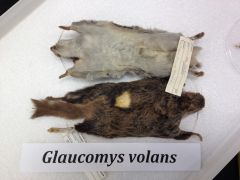
|
|
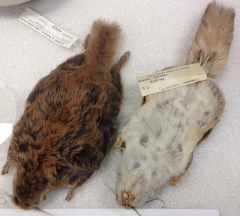
|
Sciuromorphous - sciuridae
Glaucomys sabrinus - northern flying squirrel Larger and fatter than southern, same white underside but with a little bit of dark near the bum (but barely visible). Extra gliding skin not as visible as southern. Fly with magic, hence sabrinus |
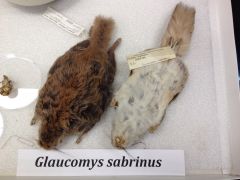
|
|
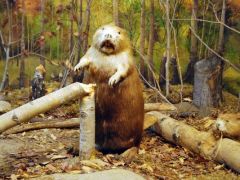
|
Sciuromorphous - Castoridae
Castor canadensis - beaver Ear opening has upward curving tube |
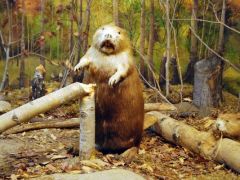
Castor canadensis
|
|

|
Hystrinomorphous - Erethizontidae
Erethison dorsatum - porcupine Infraorbital foramen as large or larger than foramen magnum |
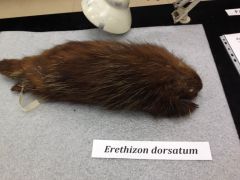
Erethison dorsatum
|

